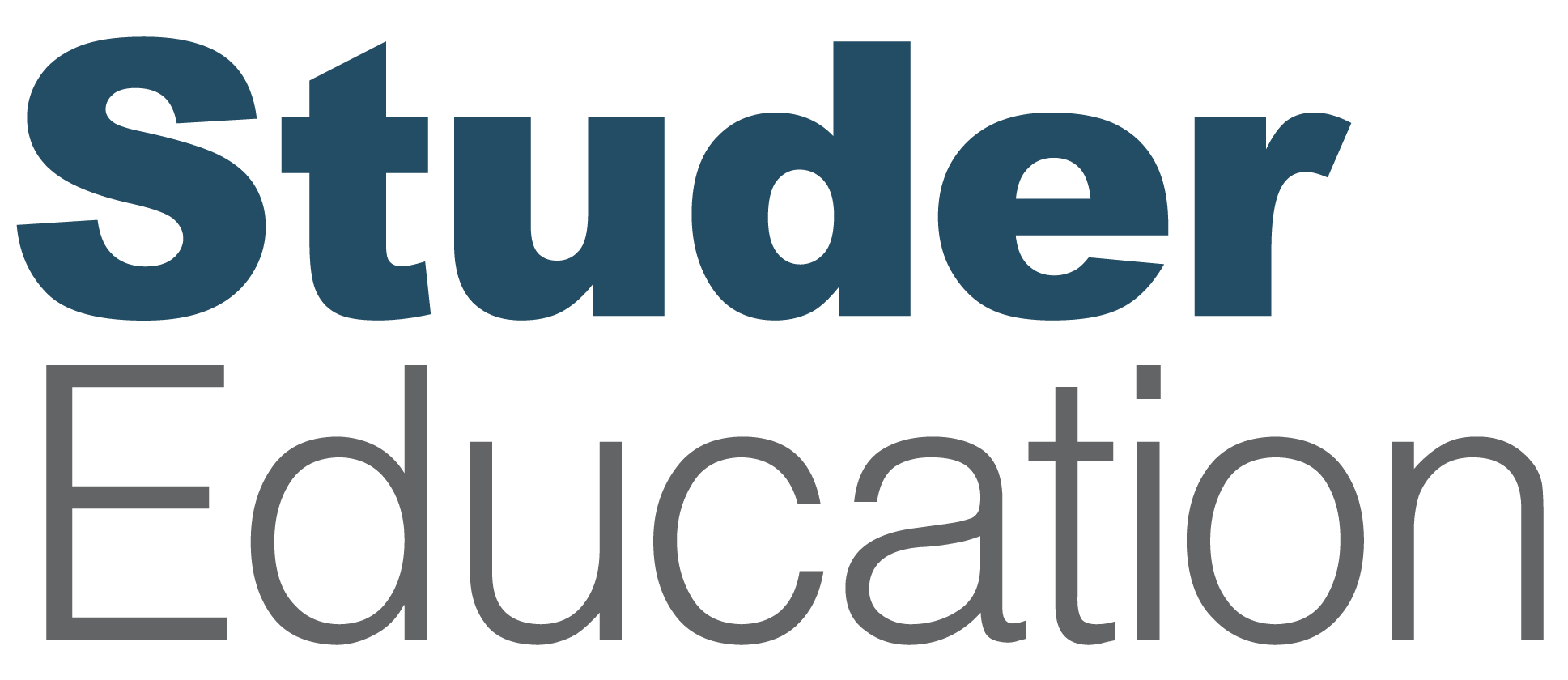
Join Dr. Janet Pilcher as she thoughtfully revisits the highlights and key takeaways from Studer Education’s recent virtual Destination High Performance conference. Listen as she describes the four essential elements at the core of leadership and emphasizes what it means to do work that is purposeful, worthwhile, and makes a positive impact.
This episode addresses questions such as:
- What are some foundational tactics that develop trust between leaders and their employees?
- What are the four leadership essentials?
- What comes first: culture or strategy?
Latest Episodes
[Intro music plays in the background.]
Janet Pilcher: Hello everyone, welcome to the Accelerate Your Performance podcast. I’m your host, Dr. Janet Pilcher, founder and president of Studer Education.
I’m glad you’re with us today, and I want to take a little bit of time to talk about the virtual conference we had last week. We had such a good opportunity to hear from our partner organizations, from some of our coaches. We engaged in some short snippets of keynote presentations, some mini master classes, and some panel discussions.
We did that over three days for about two and a half hours each day so that we would give our audience an opportunity to continue to do the work and get the work done that’s most important to you, but have a few minutes out of your day to learn and network with individuals in your community and your other colleagues.
I want to take a few minutes today just to share some of the highlights of the content that we talked about. I’d had an opportunity to take the pieces and parts of what we did and then answer some questions that we have about how we do this work.
And so I’d like to share those insights with you based on one of the sessions that I did starting on the third day. And as you all know, we focus on the Nine Principles Framework. That’s foundational in my book Hardwiring Excellence in Education, the tools and tactics that are connected to how we hardwire excellence in education.
And Hardwiring Excellence in Education, the Nine Principles present the foundational research principles that guide the work that we do each and every day. And at the conference, we focused on how leadership excellence influences student excellence, knowing that without having excellent leaders, it’s very difficult to really move our student results.
And we also focused on customer service, how we provide the best customer service inside our organization, and to the parents and families that we serve each day. And we focused on then at the end, how do we align leadership and how do we make sure that there’s alignment so that we can do our best for the families and students that we serve.?
And as we talked about the content components and the very specific examples that our partner organizations provided that drove very specific results, it reminds me of what I consider our four leadership essentials in Studer Education.
At the centerpiece of the work that we do, the centerpiece represent people and service. It’s very difficult to get the results that we want to get with our students and families and with each other if we don’t have people who are highly engaged and connected to the work and working as a team to get to positive outcomes. And at the heart of what we do each and every day and how we show up for work is we serve others. We serve those who we work with each day. We serve our students. We serve our families. We serve our communities. That service excellence or customer service is at the centerpiece of what we do, along with how we build a good workplace culture to support our people to be their best.
And in everything we do around people and service, there’s a ring that circles around that where we focus on measures, measures that matter. How do we measure how well we’re doing toward engaging our people, providing the best service? And as we’re measuring that, we’re wanting to track the progress that we’re making based on the actions that we’re implementing each and every day.
And we build those through improvement cycles. How do we monitor evidence and data day in and day out that helps us understand what’s working, what’s not working, and how we make adaptations to what we do each and every day so that we continue to improve and continue to work with our teams to know how to improve.
And so when we look at people, we’re leading with purpose. We’re leading our people with purpose and helping them continuously understand that purpose. With service, we’re delivering excellent service all the time, every day, every moment. In measurement, we’re measuring what matters. And in improvement, we’re applying feedback so that we know what we need to do to improve. And so in everything that we do, it’s within an evidence-based process by applying a feedback loop.
And if you think of a feedback loop, if you think of a circle in a loop, it’s a continuous loop. And we start that loop with gathering data. We’re acting on something and we’re gathering data about that action. We analyze that data so that we understand it, or we can see it. I remember at Hemet School District, Superintendent Barrett really showed us a spreadsheet on how they look at their data every day on student discipline and student aggression. And so there’s a way that we’re looking at that data to analyze it. And then when we look at it, we have to make sense of it. And we’re engaging in conversations with each other to make sense of the data.
And there’s a very structured process that we use through plus deltas or huddles, sometimes rounding conversations as an extension, but very specific tools and tactics that really help us make sense of the data, looking at those trends, understanding what’s happening. And then we act on it. We make a decision on what we’re going to do to improve, what we’re going to do to try to achieve the results that we put in front of us as goals.
And so once we act on it, then we continue to gather data on that action. We analyze it, we look at it, we see what’s in front of us, we make sense of it through conversations, and we continue to build those actions, whether we modify, adopt, or abandon the actions based on what we see in front of us.
So what we saw in the conference was we saw what people were doing in their leadership positions to move results forward and to continuously build improvements. And what really hit me at the conference is that before we can do any of that, or as we’re doing any of those actions toward improvement, that it’s important for us to develop trust.
And so I asked myself, what are those foundational Studer tactics that really help us develop trust? And so I categorized that into a table on one side, it’s what we’re doing to improve. And then on the other side of that table, it was what we’re breaking away from in the status quo.
And so one area for improvement, a must have, is to eliminate we/they. We’re breaking away from the status quo by shifting away from rationalizing and blaming. And therefore, we’re looking at what’s in front of us and accepting it and moving forward and not pushing the blame to someone else.
The second thing is to consistently and constantly recognize the bright spots. We have employee recognition programs. But this is not just a program. This is how do we consistently look for what’s right and use key messages and keywords to recognize what’s right so that people know what they do, matters.
We design and implement standards of excellence and what many of our presenters talked about in operationalizing the values, not just putting values on the wall, but really operationalizing those values so that we’re defining what right looks like when we show up for work every day. And that’s more than an employee policies and procedures manual. It’s not that that policies and procedures manual is not important, but in order for us to influence the trusting relationships that we want to build, it’s together operationalizing how we want to show up every day and work together, what we expect of each other, and what we don’t want to tolerate.
We apply employee rounding as a fourth element of establishing trust. And that’s more, as you all know from the many podcast episodes that we’ve talked about, it’s more than walking the halls and speaking to people. It’s very intentionally connecting with people in short segments of conversations, asking them what’s working, what needs to be improved, or what’s getting in the way of you doing your best work, who’s doing something especially well, and can I be helpful to you. And it’s recording that information just in that feedback loop, if you remember, analyzing that information, making sense of the collective information from the rounding sessions, and acting on it, and seeing how we continuously improve.
We apply a survey rollout process, and that’s more than simply administering a survey, but we’re using that data from the survey to move it through that feedback loop once again, so that we’re gathering input from the survey and we’re acting on it. So that’s the key is action, input to action, and follow up, continuously looking at how well we’re doing, moving that loop, that continuous loop into action.
And finally, in terms of developing trust, is using key words. Words are important, key words and key messages. So when we write an email, when we communicate with people, when we’re determining how to position something, the language that we choose to use becomes extremely critical. So we move from sharing information to using data to probe for understanding and to make sure that we are analyzing and looking at that message to get to the outcome that we’re trying to achieve.
And you’ve heard me say this before, but when we’re communicating, one of the first things that we ask ourselves is, “what outcome are we trying to achieve with this message?” And then when we write the message, we ask ourselves, “are we sending this message? Are we using the right words to achieve the outcome we’re trying to achieve?”
So one of the other questions that came up was what comes first, culture or strategy? And one thing that we’ve learned over the years and that you’ll see in the presentations is culture and strategy go hand in hand. Here’s what I mean. As we begin our work, we define the vision. We have to know what our strategic direction is, and that comes from the leadership, comes from where we’re trying to strategically grow in advance. We then develop and define goals and have clear measures so that we know what we’re trying to achieve. And when we’re getting there, we engage in those evidence-focused conversations with those closest to the work, again, applying that feedback loop, those evidence based processes that help us understand what’s working and what’s not, and how we move to action and continuously improve.
And that means we’re applying that feedback loop time and again with all goals with aligned actions to determine what’s working and what’s not. And when we find what’s working, we want to scale that and we want to continue the feedback loop even when we’re doing great things, even when it’s working. We want to continuously analyze and apply that feedback loop so that we know when where our gaps are and how to close those gaps when they do indeed occur. We want to be proactive and not reactive.
And then lastly, we want to dig deeper into the wicked problems by applying a scientific process. So when we’re doing any of that, we’re using that scientific process to identify, map it, apply it, assess it, and abandon, adjust and adopt so that we can solve those wicked problems that are there.
And I just listed, these are the things that we do. These are the actions that we take as leaders in order to move our organizations forward. But some parts of those actions have a strategy component, and some parts of those actions have a culture component. And I go back to what I talked about a few minutes ago. We can’t do any of these things well unless we apply very specific actions, always actions, that we take with our people to build trust so that we can move our organizations forward. So culture and strategy do indeed go hand in hand.
You know, at the end of the day, as we listen to the presenters and as we continue to do our work with our partners and as I continue to reach out to all of you, we want to do work that has purpose. We want our work to be worthwhile, and we want to make a difference in the lives of those that we serve. That’s why we do what we do each and every day and why we’re so committed to the leadership work that we’re committed to.
You know, I think about several weeks ago, my dad had his 90th birthday party. He turned 90, and we had a big birthday party for him. And I asked him how many people he wanted to invite or who he wanted to invite, and he gave me a list of about 160 people. And I thought to myself, “if I’m 90, I hope I know 160 people to invite to my birthday party.” That just speaks so positively about my dad, just the people that he knows and that he’s been connected to all his life.
And at that party, people were so happy to wish him happy birthday and to see him, and we had a dinner, and we had time together, and we connected with each other. We had a little band in the background. And at one time I asked the band if they would go ahead and lead us all at the party to sing “Happy Birthday.”
And so we all started to sing. When we did, my dad just stood up very slowly from the place that he was sitting, and he looked at everyone with the biggest smile. I knew at that moment that my dad realized that he had purpose, that he did worthwhile work, and he indeed made a difference in the lives of others.
I hope that as we continue to lead that we stand up and smile.
[Outro music plays in the background.]
Just a quick note before we go, because there was such a high demand for the recorded presentations, we’ve opened up the registration to anyone to access the recordings from now until August. All of our sessions that were presented are recorded. So if you would like to connect to those and learn more from our wonderful partner presentations, please go to studereducation.com/events and link to the K-12 virtual conference link.
I am so honored to be part and host of this podcast, Accelerate Your Performance, and appreciate the time that you give me each and every week. Have a great week, everyone.








